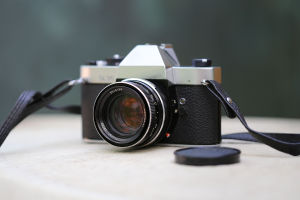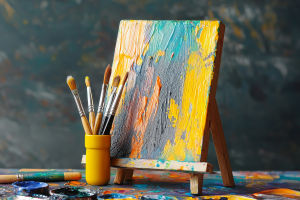3D Printing Art
In the realm of art, creativity has no limits.
Artists have always sought innovative ways to express their visions, and over the years, they have explored countless mediums, from oil paints to digital canvases.
However, one of the most groundbreaking developments in recent years is the rise of 3D printing technology. With its potential to reshape artistic practices, 3D printing in art opens new frontiers for creativity, allowing artists to create objects and sculptures in ways that were previously unimaginable. How is 3D printing transforming the world of art, and what does the future hold for this revolutionary medium?
What is 3D Printing in Art?
3D printing, also known as additive manufacturing, is a process that creates three-dimensional objects layer by layer from a digital model. Unlike traditional sculpture, where artists remove material from a solid block, 3D printing builds an object from the ground up, allowing for intricate designs and complex geometries.
This process uses a variety of materials, such as plastics, metals, and even ceramics, which makes it versatile and applicable to different forms of artistic expression.
In the context of art, 3D printing allows artists to create physical sculptures, installations, and objects that would be difficult or impossible to achieve using traditional methods. The ability to print in three dimensions opens up new avenues for artistic exploration, enabling creators to push the boundaries of what is possible in both form and function.
Artists can now design and produce pieces that would require extensive manual labor or expensive materials to create by hand.
How 3D Printing Enhances Creativity
One of the most exciting aspects of 3D printing in art is how it enhances creativity. Traditional sculpting often involves laborious, time-consuming processes, with artists needing to plan every cut and shape carefully. With 3D printing, however, artists can experiment more freely, making changes to their designs quickly and efficiently.
They can instantly prototype their ideas, iterate on concepts, and explore complex forms that might have been impractical using conventional techniques.
The ability to manipulate digital models and instantly see a physical representation of the artwork allows artists to think outside the box. For example, artists can combine elements that might be impossible to join in traditional sculpture, such as mixing hard materials with soft ones, or creating intricate, detailed designs that would be challenging to carve by hand. This freedom leads to an explosion of creativity, allowing for entirely new forms of art to emerge.
3D Printing and Art Installations
Beyond individual sculptures, 3D printing has also made a significant impact on the world of art installations. Artists can now create large-scale, interactive environments that were previously impossible to design or install. 3D printing allows for the creation of intricate structures that can interact with the environment or even respond to viewers' actions.
In art installations, 3D printing can be used to design components that fit perfectly together, enabling artists to build massive, immersive environments in a fraction of the time it would take using traditional methods. Additionally, the precise nature of 3D printing allows for the creation of bespoke pieces that fit specific spaces, enhancing the viewer's experience and interaction with the artwork.
For example, artists have used 3D printing to create expansive, sculptural installations that transform entire rooms or galleries. The ability to create detailed, custom-built objects also means that the installation itself becomes part of the artistic experience, providing new dimensions for viewers to explore.
The Accessibility of 3D Printing for Artists
One of the most remarkable aspects of 3D printing is its democratizing effect on the art world. In the past, artists had to rely on expensive materials and specialized tools to create intricate sculptures or installations. 3D printing, however, makes it possible for artists to create detailed and complex works with much lower costs.
The materials used in 3D printing are often cheaper than traditional sculpture materials, and the technology itself has become more accessible in recent years, with printers available at a variety of price points.
For many artists, this means that 3D printing is opening up new opportunities for experimentation and innovation. Artists no longer have to rely on funding from galleries or patrons to create large-scale works, as they can now produce high-quality art in smaller, more affordable batches. Additionally, with online platforms offering downloadable 3D models, artists can access a global repository of designs and inspiration, further expanding their creative horizons.
Environmental Impact and Sustainability
As the world becomes more conscious of environmental concerns, the art world is also seeking ways to reduce waste and embrace sustainability. 3D printing offers an environmentally friendly alternative to traditional methods by minimizing material waste.
In traditional sculpture, much of the material is removed from the original block, leading to excess waste. With 3D printing, only the necessary material is used to create the object, reducing overall waste and energy consumption. Furthermore, artists can use recyclable and sustainable materials in their 3D printing projects, allowing for the creation of eco-friendly art.
For example, some artists have used recycled plastic or biodegradable materials to create sculptures and installations, giving new life to waste products and contributing to a more sustainable art practice.
The Future of 3D Printing in Art
The future of 3D printing in art is incredibly promising. As the technology continues to evolve, we can expect even more exciting developments in the way artists create and interact with their works.
For example, advancements in 3D printing materials will likely lead to more durable, flexible, and diverse options for artists, enabling them to push the boundaries of their creations even further.
We may also see increased collaboration between artists and engineers, as the merging of art and technology opens up new possibilities for hybrid creations. 3D printing could play a significant role in creating interactive art that integrates with virtual or augmented reality, enhancing the viewer's engagement with the work.
As 3D printing becomes more accessible and refined, it will undoubtedly shape the future of art, enabling artists to experiment and innovate in ways that were once thought impossible. The future of 3D printing in art is full of infinite possibilities, and it's clear that this technology will continue to revolutionize the way we create, experience, and appreciate art.
Conclusion: Embrace the Future of Art
3D printing in art represents a bold and exciting future for creative expression. By allowing artists to create with more freedom, precision, and accessibility, 3D printing opens up a new world of possibilities.
Whether it's for individual sculptures, large-scale installations, or interactive art pieces, 3D printing is reshaping the way we view and experience art. As the technology continues to evolve, it will undoubtedly play an even larger role in shaping the art world for generations to come. Embrace this new frontier, and who knows what innovative masterpieces will emerge next?
Are you ready to explore the endless creative potential of 3D printing in art? The future is now!
Contact to : xyjph123@gmail.com
Privacy Agreement
Copyright © boyuanhulian 2020 - 2022. All Right Reserved.
Privacy Agreement
Copyright © boyuanhulian 2020 - 2022. All Right Reserved.


